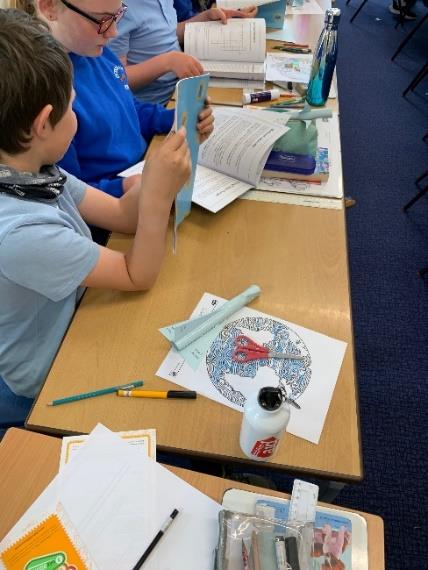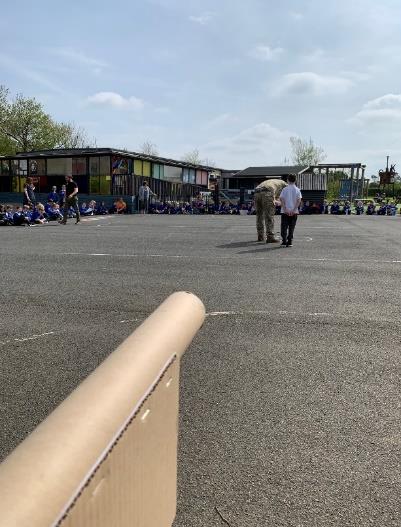
RAF STEM Ambassadors from RAF Boulmer celebrated the month of the military child with Key Stage 2 pupils from St. Breward and Otterham primary schools in Cornwall.

The team introduced lesson 2 of the theory of flight serial which built on the concept of drag, lift, thrust and gravity which had been introduced in the previous lesson. The pupils were challenged to come up with ideas on how flight can be achieved in Space. The STEM team led discussions around rockets and highlighted the difference between flying within the earth’s atmosphere and Space.

The lesson was followed by a workshop whereby the pupils were separated into groups. Each group was provided with a finite range of resources (A4 paper, tape, Scissors and a nose cone) and asked to design a model rocket which would be launched later on using all the skills and knowledge learnt from the lesson. Innovative ideas were soon on display for example, one group challenged the idea of adding fins to their design due to the extra weight. Communication was evident as teams were coming up with names for their rocket model and haggling for the limited resources.

Once every team had completed their model, they had a break for lunch. Immediately after lunch, the whole school was present at the assembly ground to witness the launching of the model rockets using our model launch pad. One by one each group was invited to launch their model with the aim to be the furthest to reach in height. Height was measured using a home-made clinometer designed by one of our ambassadors.

After going through the first round of launching we had four finalists. At this point we could hear discussions amongst the finalist, strategising on ways to get an advantage on their models. A few realised that since compressed air was the propulsive force, it was important to ensure a rigid and strong structure around the nose cone – paper joint. Due to the ingenuity shown by the pupils, we were able to achieve a height of 37 meters on day. The event was closed with a review of the day, highlighting the use of STEM subjects during the activities.







